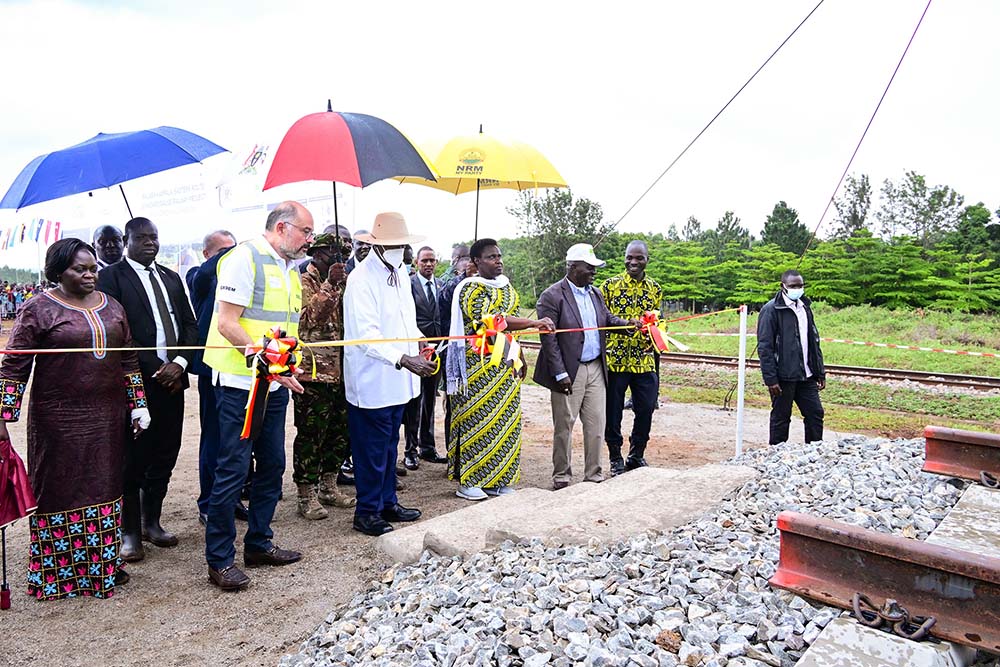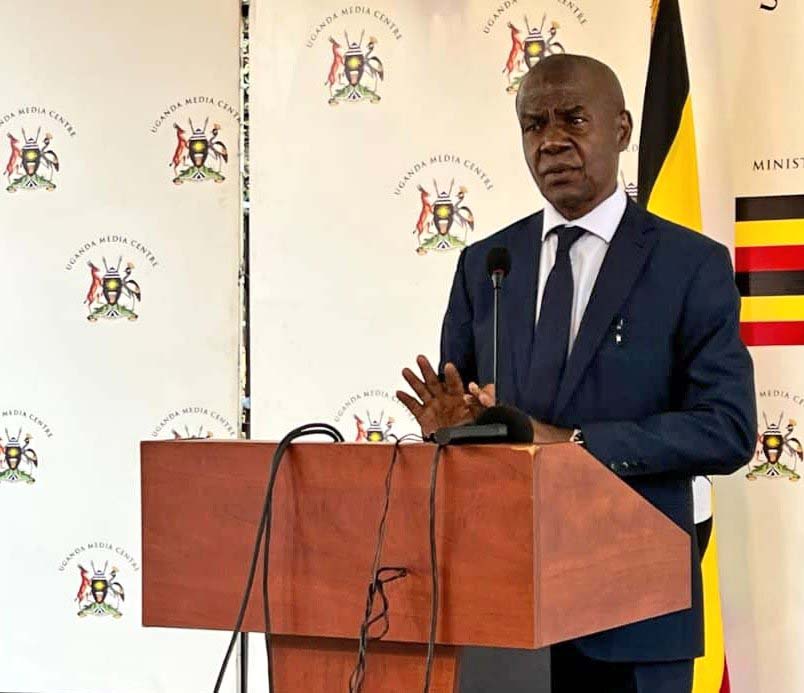SGR symposium opens door for Ugandans to share in sh4.3 trillion windfall to economy
President Yoweri Museveni at the commissioning of the SGR construction project in Tororo District in November 2024.
KAMPALA - Construction of the long-awaited 273-kilometre section of the Standard Gauge Railway (SGR) from Malaba, on the Kenyan border, to Kampala, is expected to kick off in March 2026, and pump up to sh4.3 trillion into the local economy.
It's upon this background that the Ministry of Works and Transport has partnered with the SGR secretariat to organise the first SGR National Content Symposium on Friday, 29th August at Speke Resort Munyonyo, to invite local participation in the execution of the project.
Addressing journalists at the Uganda Media Center today, Dr Richard Sendi, the SGR head of Planning and Strategy, said that whereas the total cost of the entire project will amount to Euro 2.7b, 40% of this amount, which totals to sh4.3 trillion, will remain in the local economy.
“Locals should come and see how they can partner with the contractor in the execution of this project. In addition to labour, the contractor will also obtain inputs such as cement, sand, stones, and in some cases, steel, locally. This will boost the local economy and add value to local manufacturing outfits,” he said.
President Yoweri Museveni flanked by the Vice President Jessica Alupo and several ministers at the commissioning of the SGR construction project in Tororo District in November 2024.
Symposium set
Canon Eng. Perez Wamburu, the SGR project manager, said that the symposium will run under the theme: “Unlocking Local Potential through Modern Rail Infrastructure.”
The intention of the symposium, he said, is to prioritise the use of Ugandan goods and services and to enable the private sector and citizens to actively participate in SGR development, operations and maintenance, under the national Content Strategy.
“National content is premised through areas of participation for locals such as suppliers of cement, steel, earthen materials (aggregates, sand, ballast, and gravel,” he said.
He mentioned other areas as labour-skilled, semi-skilled, and unskilled services [legal, communication, financial services, security services, equipment leasing/construction, logistics, clearing and forwarding, tourism and hospitality, medical and health services]. Among others.
Wamburu further noted that pushing the National Content agenda also targets skills development through training, educational partnerships, job opportunities, technology transfer, and enterprise development by enhancing supplier capacity, access to finance, and business clinics.

Canon Eng. Perez Wamburu, Project Coordinator, addressing journalists at Uganda Media Center.
SGR progress
The Uganda SGR, which will constitute a network of 1,724 kilometers is set to link Uganda with East African Community partners Kenya, Tanzania, Rwanda, Burundi, the Democratic Republic of Congo, and South Sudan.
Wamburu disclosed that following the release of the Euro 75m by the Uganda Government through the Ministry of Finance, the contractor, Yapi Merkezi, is already on the ground and has commenced preliminary works.
“The contractor is currently conducting geotechnical surveys, topographic surveys, material site identification, and setup of a campsite, concrete yard, and batching plant. They are also establishing a railway sleeper factory along the corridor, with the capacity to produce 150-200 concrete sleepers per day,” he said.
Compensation at 80%
Wamburu said that compensation of the project-affected people has hit 80%, giving the contractor the right of way and enabling him to commence with preliminary construction work.
“Out of the 12 districts traversed by the railway corridor, land acquisition has now reached Buikwe – the ninth district from Tororo. Valuation reports for Mukono, Wakiso and Kampala are currently with the Chief Government Valuer, awaiting approval. Compensation will follow shortly afterwards,” he said.
Advantages of SGR projects
• Enhance regional integration and international trade
• Reduce transport costs ($0.155 per tonne-km to $0.05 per tonne-km)
• Reduce travel times from Mombasa to Kampala (10-14 days to 1 day)
• Reduce road wear & tear, road maintenance costs
• Create jobs during the construction phase
• improved safety and reliability of transport
• technical skills transfer to the local workforce.